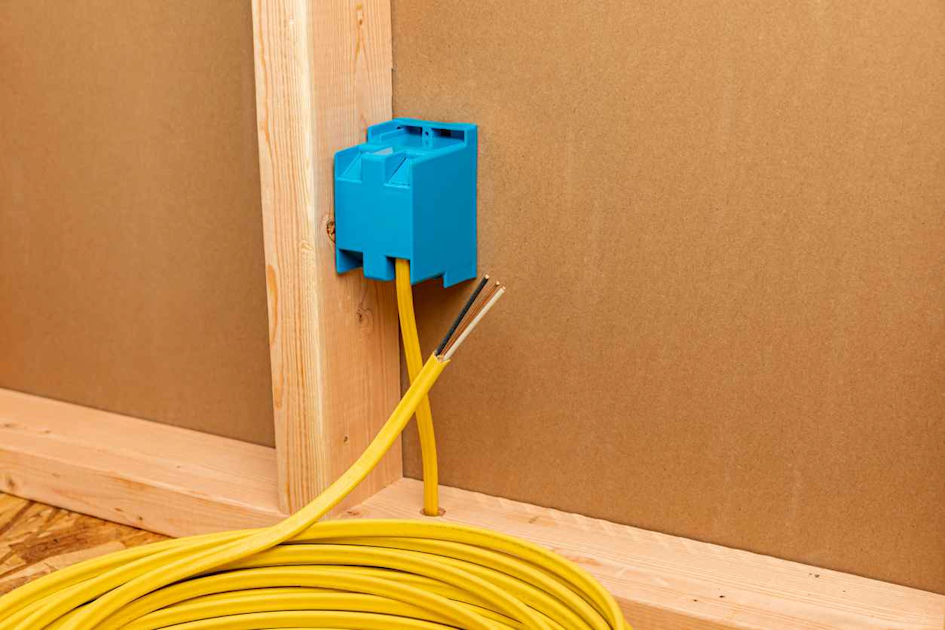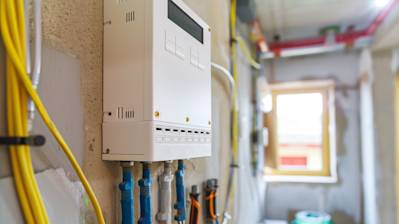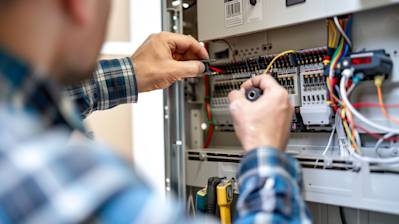Wiring is a fundamental aspect of every home, and professionals and do-it-yourself builders alike need to select the best material for their projects. One of the most popular options used is Romex® wire, a brand name that has become synonymous with quality and durability in non-metallic sheathed cable. This blog post delves into the world of Romex wire, exploring its various uses, features, and types, making sure you are well-informed about this versatile product.
What Is Romex Wire?
Romex refers to a brand of non-metallic (NM) sheathed wire, produced by Southwire, an American company renowned for their reliable electrical wiring products. Since its inception, the Romex brand has continuously provided excellent services in line with industry standards and residential needs employing technological advancements, which makes it the go-to option for electrical outfits globally.
Anatomy of Romex Wire
A Romex cable consists of four components that work collectively to ensure safety and efficiency in power transmission:
- Conductor: Usually made from copper or aluminum, it transfers electricity.
- Insulation: This component covers the conductor, warding off shock hazards.
- Sheathing: A non-metallic, often plastic shield that encases all wires within the cable.
- Ground Wire: A crucial safety element that channels electrical surges safely to the earth.
Why Choose Romex Wire?
In choosing your wiring material, it's important to consider the features of Romex wiring which make them ideally suited for a variety of electrical applications:
- Safety: Romex wires are inherently safe, thanks to the additional ground wire that mitigates electrical fault risks.
- Simplicity: It comes in a unified cable structure, making installations straightforward and easy.
- Durability: The plastic sheathing provides superior protection against environmental factors, ensuring a lengthy lifespan.
Understanding Romex Wire Codes
When purchasing Romex wires, you'll notice a series of codes imprinted on the cable. These codes indicate the cable’s specifics that are critical to ensuring safe and effective installations:
- Wire Gauge (AWG): This represents the wire's diameter. Lower numbers suggest a larger wire cross-section.
- Number of Conductors: This digit indicates how many insulated wires are within the cable.
- Material: The letter 'C' refers to the use of copper conductors.
For instance, a code such as "12-3 NM-B W/G" would mean a 12-gauge wire, three conductors within the sheathing, with copper as the conducting material.
Types of Romex Wire
Romex wires come in different types based on the intended use:
- Romex NM-B: This is typically used for interior residential wiring. It's available in 14, 12, and 10-gauge sizes.
- UFB Cable Romex: Underground Feeder Cable is designed for outdoor and underground use. Its toughened sheathing offers enhanced resistance to moisture, dirt, and direct sunlight.
Installation Tips for Romex Wire
For a successful Romex wire installation, here are a few tips to guide you:
- Ensure you choose the appropriate wire gauge for your project.
- Secure all Romex wires with cable staples or straps.
- Follow local electric codes to meet safety standards.
Romex Wire Legalities
It's vital to be aware of the legalities surrounding Romex wire usage. In some jurisdictions, certain buildings like commercial properties may require a metallic sheathed cable, like BX cable, instead of NM Romex wire due to stricter fire codes.
Therefore, always check with your local building codes to ensure your Romex wiring project is up to standard.
Frequently Asked Questions about Romex Wire
How is Romex Wire Sized?
The size of a Romex wire refers to the wire's gauge, which in turn refers to the diameter of the wire conductors within the cable. The gauge is specified by the American Wire Gauge (AWG) system. A smaller AWG number indicates a larger wire diameter. For instance, a Romex wire labeled as 14/2 means it's a 14-gauge wire with two conductors.
Can Romex Wire be Used Outside?
Generally, Romex wire is not recommended for outdoor use as it is not designed to be moisture-resistant. Instead, a type of cable known as UF-b (Underground Feeder) should be used for outdoor wiring needs as it is designed to resist the damaging effects of moisture.
What is the Difference Between Romex and THHN Wire?
Romex and THHN (Thermoplastic High Heat-resistant Nylon-coated) wires are two distinct types of electrical wiring. Romex is a brand of NM-B (Non-Metallic Sheathed Cable) and is typically used in residential buildings. It is designed as an all-in-one solution, with multiple wire conductors encased in a plastic sheath.
On the other hand, THHN is a single conductor wire encased in a heat-resistant, nylon sheath. This type of wire is most commonly used in conduit and cable trays for service, feeders, and branch circuits in commercial or industrial applications.
Where Should Romex Wire Not be Used?
While Romex wire is versatile, it should not be used in certain environments. It shouldn't be used outdoors, in moist places, or in locations exposed to excessive heat, due to its non-weather resistant sheathing. Also, it's not recommended for use in commercial buildings that require a metal conduit due to fire codes.
How is Romex Wire Installed?
Romex wire is installed using staple fasteners to secure it to wall studs and joists. It's essential to avoid over-tightening the wire during installation which can damage the protective sheathing. Always make sure to have enough slack to avoid unnecessary tension on the wire and to enable connections without strain.
Can Romex Wire be Buried?
Romex wire is not rated for direct burial in the soil. This is because the wire is not designed to withstand underground conditions which often involve moisture. For direct burial applications, UF-B wire is recommended due to its moisture-resistant properties.
How Long does Romex Wire Last?
The longevity of Romex wire depends on several factors including the quality of the installation, any mechanical stress it undergoes, and the environmental conditions where it's installed. Under ideal conditions and with proper installation, Romex wire can easily last for many decades.
Is there a Difference Between Romex Wire and NM Wire?
The term Romex is often used interchangeably with NM wire, but technically, Romex is a brand name for a type of NM (Non-Metallic) wire. The wire itself is the same; the difference is largely in nomenclature due to the particular brand's popularity.
Pros of Romex Wires
Romex is a brand of non-metallic sheathed cable or electrical wire commonly used for residential wiring applications. Here are some of its pros:
Easy to Install
Simple Handling and Use
Romex wire is known for its flexibility and easy handling. It is easy to bend, run through walls, and work around corners, which simplifies the task for electricians and DIY enthusiasts alike.
Lightweight
Romex wire is more lightweight compared to metal-clad or armored cables, causing fewer fatigue and strain to the installer. This attribute makes the installation process quicker and more efficient.
Convenient Packaging
Romex wires typically come in spools of varying lengths, providing convenience for projects of different sizes. You can purchase a smaller spool for minor works, or a larger one for significant electrical projects.
Cost-Effective
Affordable
When compared to other types of wires, ROMEX is generally less expensive. It offers a cost-effective solution for both large-scale and small-scale electrical installations without compromising performance.
Reduces Labour Costs
Due to its easy installation process, ROMEX wires require less time and labor to install, leading to lower overall costs.
Safety Features
Insulation Protection
Romex wires come with non-metallic sheathing that covers the insulated copper wires. This feature provides an extra layer of protection from any physical impact, reducing the risk of the wire exposing and leading to faults or electrical shock.
Resistance to Moisture
While it is not waterproof, Romex wire’s sheathing offers a certain level of resistance to moisture. This feature prevents the wire from easily being damaged or corroded by a damp environment, prolonging its lifespan and maintaining its performance.
Cons of Romex Wires
Despite its numerous benefits, Romex wire also has its downsides. Here are some of its cons:
Limited Use
Not for Outside Use
Romex wire is intended for use in dry, indoor spaces only. It’s not designed for outdoor use, wet areas, or any environment where it could be exposed to moisture or extreme weather elements.
Inflexible for Some Applications
While it's flexible enough to meet most users' needs, Romex wire can be quite stiff when dealing with tight spaces, obstacles, or corners. Therefore, some applications may require more flexible options, such as conduit wiring.
Lack of Robustness
Not Suitable for High Damage Risk Areas
Unlike metal-clad or armored cables, Romex wires are less robust and, therefore, less suitable for areas prone to damage like commercial or industrial buildings.
Safety Concerns
Fire Hazard
Like any other electrical wiring, Romex wire carries a certain risk of fire if not properly installed or maintained. Overheating can degrade the wire's insulation over time and potentially lead to a fire.
Risk of Rodent Damage
Romex's plastic sheathing can be easily chewed through by rodents. If this occurs, there’s a risk of electric shock and fire, especially when the damaged wires are left unnoticed and unattended.
Summary
So, that's the general rundown on Romex wire. It really is a beneficial choice due to its versatility. With Romex wire, you have the ability to use it in a wide range of applications - from small house tasks to commercial electrical systems. It's durable and pretty simple to work with.
Romex wire, besides being easy to install, is way safer than some of the other options out there. Covered with sheathing, it considerably lowers the risk of electrical shocks and accidental wire damage. It's the kind of peace of mind every homeowner deserves - knowing that your wires won't cause any unexpected issues.
And finally, talking about cost-effectiveness, you can't go wrong with Romex wire. It's made from widely available materials, which makes it a cheaper choice over metal-clad cables. Not to mention, its simple design makes for a quicker install, which in turn can save on labor costs. To sum it up, Romex wire combines safety, affordability, and versatility, making it a top pick for those taking on any electrical wiring jobs.
About Sagan Electric
Sagan Electric, based in Sacramento, CA, is your friendly neighborhood company offering the best blend of quality, efficiency, and affordability in electrical services. Resting upon decades of experience, we come in to shed light (literally!) on anything electric that needs fixing, installing, or tweaking. Our team of certified electricians doesn't just work around things, we tackle each project head-on while sticking to deadlines. We've lit up countless homes and businesses, giving them a safe, comfortable and well-lit environment to thrive in. With Sagan Electric, flip the switch on at ease!
Tags: electrical, wiring, building materials,








